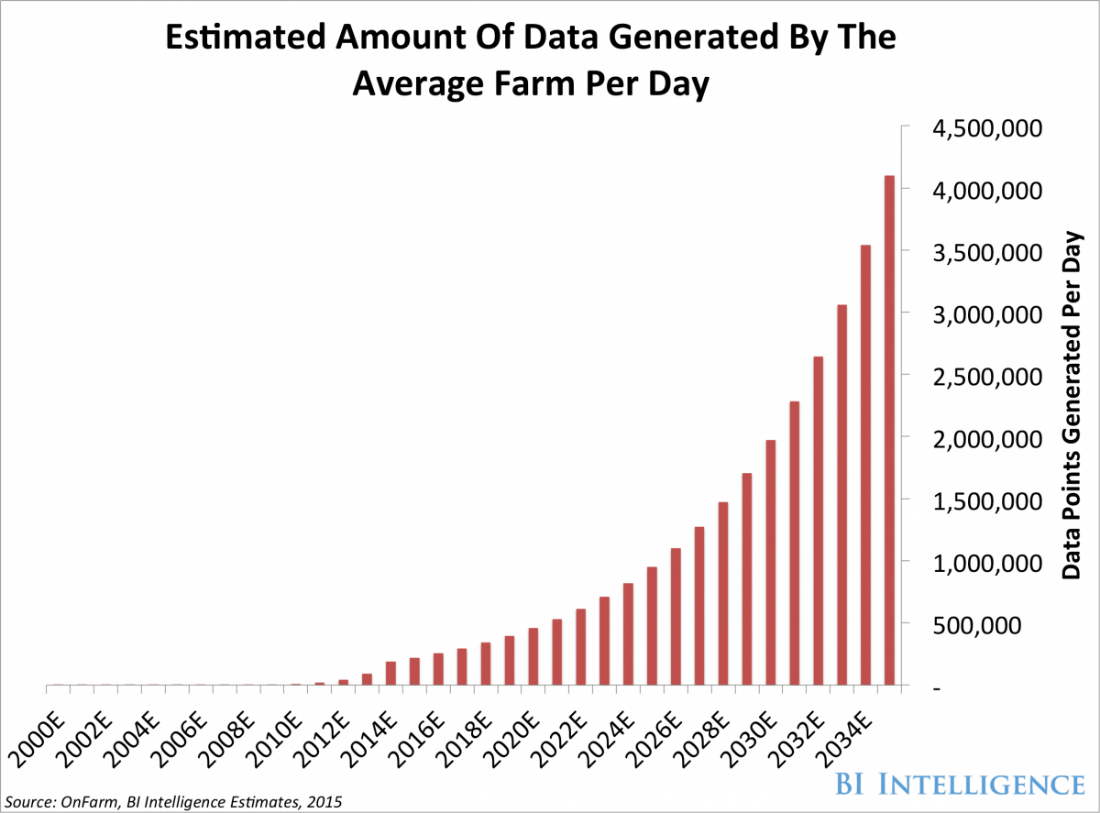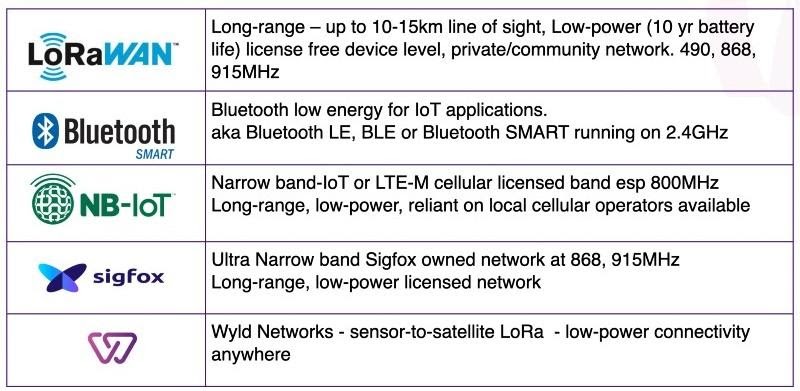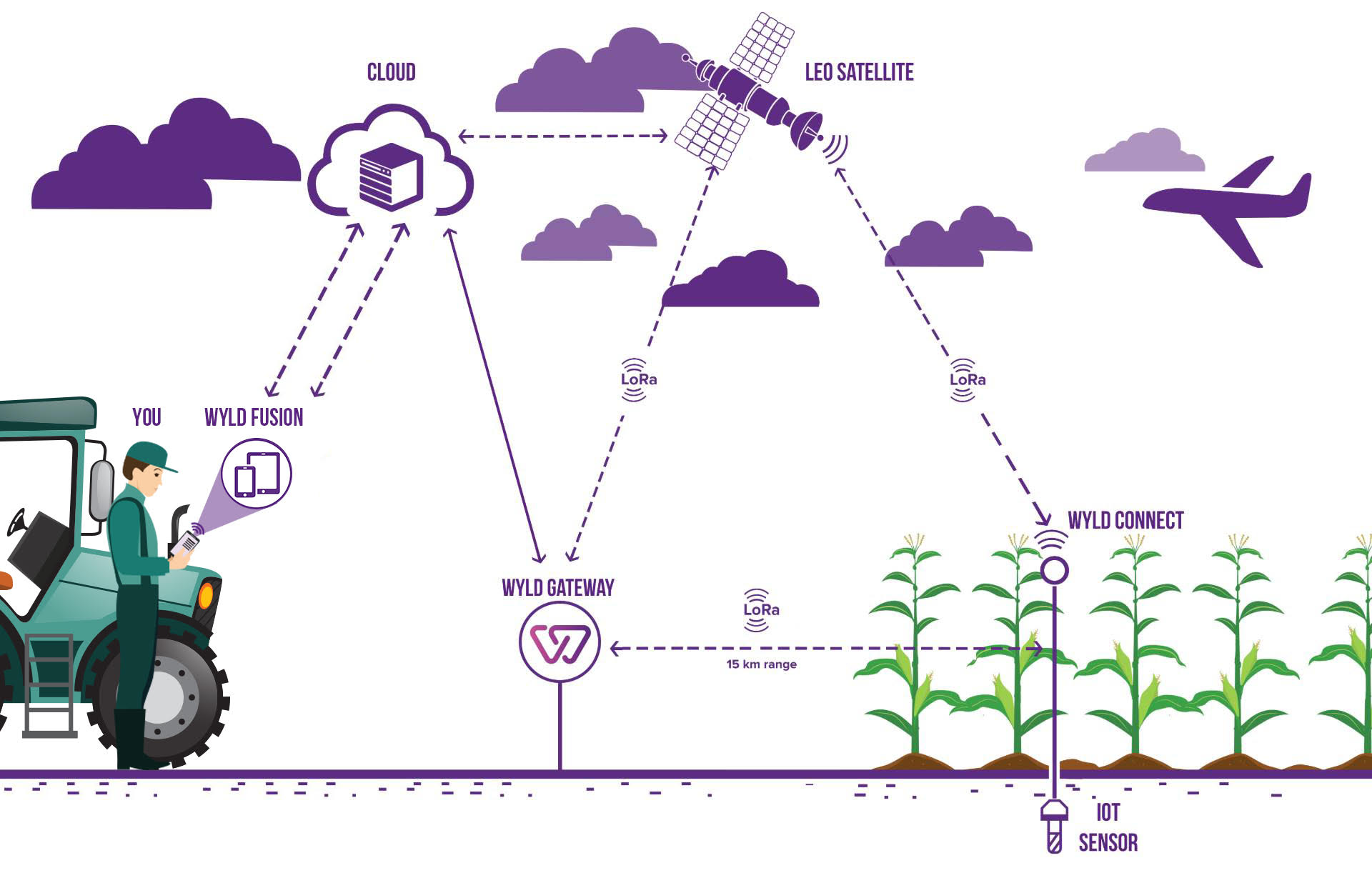By Eric Hewitson, Wyld Networks, Ltd.
The agriculture sector is turning to the Internet of Things (IoT) for help. And little wonder, as the UN Food and Agriculture Organization has predicted that global food production in 2050 will need to be 70 percent higher than in 2009, with the world population and calorie per capita intake continuing to grow rapidly.
To meet these targets there will need to be a quantum leap in technology and tech take up in farming. This transformation is underway and at the heart of it is a super efficient agritech ecosystem with a dynamic wirelessly connected IoT.
BI Intelligence predicts that by 2035 there will be over four million data points per day on the average farm – an eightfold increase on 2020.

The UN predicts that demand for cereals for both food and animal feed will reach around 3 billion tonnes, up from around 2.1 billion tonnes in 2009. The demand for meat will reach around 470 million tonnes, up from less than 270 million tonnes in 2009.
To generate increases in yield without an increase in land resource is going to require major changes. Insights and technological innovations akin to the step changes brought on by, for example, the invention of the plough or the Haber-Bosch process, are going to be required. And all this must take place amidst the complex challenges of climate change, forcing agricultural producers to battle against water shortages, increasing temperatures and more freak weather incidents.
The Case for More Information
Fundamental to the agricultural innovation revolution is the need for more data points. In order for agronomists, engineers, designers, and farmers themselves to develop new practices, new equipment and innovations will be getting a granular data picture of all aspects of the food production cycle.
Key data sources include:
Soil moisture sensing weather stations
Slurry monitoring
Livestock tracking
Crop monitoring
Asset tracking
Storage monitoring
Field to fork tracking
For example, a key measurement for informing decision makers is the moisture level of soil at different locations and depths across a farm. In order to calculate the best times for sowing and harvesting, or detecting temperature changes in a greenhouse and adjusting the ventilation and irrigation accordingly, there need to be deep data sets.
Indeed, so much of agricultural success depends on being able to accurately measure environmental conditions – and translate these conditions into intelligent insights as to when and how to intervene – that there are truly enormous possibilities for agricultural IoT. Sensors that measure qualities like the location of livestock, the weather in a field or the conditions of the soil are relatively cheap and straightforward to deploy, yet can grant unparalleled visibility into the conditions across even the biggest farms and ranches.
In addition to better pest management and weather forecasting, IoT could save up to 50 billion gallons of water annually, as sensors can better help farmers optimize water usage.
Some key areas to benefit from these monitoring improvements include:
Looking to automate the data collection process
Reduce the need to visit the sensor
Increase granularity – sensors/acre
Take away wiring – trip hazard, safety issues, expensive
Remote update of software
Continuous data collection and alerts
Work in remote areas that otherwise could not be served
IOT technologies in Agriculture
At its simplest, the IoT for agriculture generates data on crops and livestock with the help of sensors – light, humidity, temperature, soil moisture, etc – and automates processes and systems such as those used in irrigation, soil management and livestock health. Farmers are increasingly able to monitor field conditions from anywhere with data flowing seamlessly from sensors in the field to the cloud and finally on to a cell phone app. Increases in operational efficiency, lowering of costs, reductions in waste, and improved quantity and quality of yield all stand to be improved with connected quality information.

IoT Connectivity in Agriculture
Designing, producing, and deploying sensors and devices needs to go hand-in-hand with improvements in connectivity. The current pace of broadband change and mobile connectivity in rural Britain, according to the 2019 NFU survey, is unacceptably slow, with 64 percent of farmers believing their broadband speed is insufficient for the needs of their business and 59 percent believing the cellular signal they receive is insufficient. In 2020, the UK’s Stuart Roberts, NFU Vice president, said:“Many of our members feel they still don’t have adequate access to the broadband services needed to run a modern-day farming business.”
However connectivity for the IoT does not rely only on cellular and wifi. There are other wireless radio technologies available such as in this chart:
What are LoRa and LoraWAN?
LoRa, is a modulation method for transmitting long range radio signals with low-power. A way to visualize this might be to think of a soil moisture sensor in a remote row crop sending small data packets several times a day over a distance of say 10 kms being able to run on two AA batteries for 3 – 5 years.
LoRaWAN is the standard protocol for wide area network communications using the LoRa method. It creates an IoT network with bi-directional communications between usually battery and sometimes solar operated sensors.
Sensor-to-Satellite IoT for Agritech
An emerging technology in agritech is the development of sensor-to-satellite connectivity. Again, using LoRa, it is now possible to send data from the farm directly to a Low Earth Orbit satellite and in so doing not be required to maintain a terrestrial LoRa network. Effectively the terrestrial gateway normally required is replaced by a gateway in space. This frees up sensors to be placed anywhere on the globe.

Sensor-to-satellite connection means not only currently unserviced areas will come into range but new possibilities may emerge that without the data would not have previously be considered viable. For example a crop that requires certain soil type, water input and fertilizer, may become possible in a given environment if the true information of the ecosystem is understood in detail both a macro and highly localized way. Specific conditions not just of each field but of specific areas of a field can alter inputs to improve yield and reduce environmental impacts. New models based on return on investment modeling will emerge from this new information derived from satellite connectivity. The opportunity to blend this data with highly local satellite imagery is a potential game changer for agritech.
The Future of IoT in Agriculture
There is a massive potential for IoT innovation in global agriculture. The new norm will involve connecting wireless sensors, from the corn and wheat heartlands of the USA, to sub-saharan cassava production in Nigeria, to the livestock farms of Argentina and to vertical farming in any urban area across the globe.
Agricultural colleges and universities, agronomists, agrometrics software providers and farmers all stand to benefit from these new rich, granular data sources. With machine learning and AI breakthroughs, improvements in data flow are predicted to radically gain pace to deliver against the demanding environmental and agricultural targets that lie ahead.
*All views, data, opinions and declarations expressed are solely those of the author(s) and not of Global AgInvesting, GAI News, GAI Gazette, or parent company HighQuest Group.



